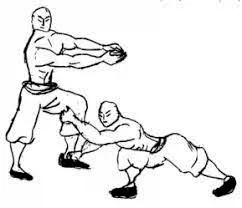You don’t have to guess, because the full history of BJJ is pretty well known and can be verified with historical documents and eyewitness accounts. The art is less than 100 years old.This is my wild guess without facts:
I bet BJJ was from Asia originally, just by the simple fact the history of the America continent is ONLY a few hundred years, people moved from all over the world to America continent. It is just logic that the original technique was brought in from outside. Then it just evolved in Brazil. Then you just look at difference styles and it's likely evolve from either Judo or Jujitsu of Japan.
Also remember Royce Gracie fight with "ge", that exactly like Judo "ge".( maybe japanese JJ "ge"). I don't record any Chinese MA wear those kind of white "ge".
That's the most logical way to GUESS.
I’ll go ahead and summarize the highlights for anyone who doesn’t know the history or who only knows the version advertised by Rorion Gracie (which contained a certain amount of spin).
In the early part of the 20th century there was a Japanese Judo master named Mitsuo Maeda who traveled to the west and embarked on a career as a prizefighter and sometimes Judo instructor. After spending time in the U.S. and Europe, he moved to Brazil in 1914, where he continued to fight and sometimes teach. During this time, Judo was still sometimes referred to as Kano Jujutsu and it appears that Maeda called himself a jujutsu instructor.
According to Gracie family tradition, Carlos Gracie learned directly from Maeda. Examination of the timeline of who lived where when, it seems very possible that Carlos actually learned mostly from another student of Maeda’s. Either way, it doesn’t appear that his training under an instructor went on very long - probably two years at most. There’s also no record of him ever receiving any official belt rank in Judo.
Carlos taught what he had learned to his brothers (in particular George and Helio) and then they went into business teaching Jiu-jitsu and promoting themselves and their art to the general public via challenge matches. Along the way, they shifted the focus of the art onto ne-waza (ground fighting). There are probably several reasons for this, but one primary motivation for continuing that evolution was challenge matches against other styles. Since most people don’t have a natural instinct for the correct way to move on the ground and since most styles don’t teach much in the way of ground fighting, the Gracies has a secret weapon as long as they could drag their opponents down.
I should mention that the Gracies were not the only people passing down the tradition from Maeda. There was another one of Maeda’s students named Luis Franca and he had a student named Oswaldo Fadda who taught at the same time as the Gracies. You can still find Franca/Fadda lineage schools, but due to cross pollination, what they teach is indistinguishable from Gracie lineage schools. However the Gracies were much more aggressive in their marketing and publicity so without their efforts the art would probably never have become the worldwide phenomenon that it is today.
So, if Carlos Gracie started out with less than two years of Judo training, how did BJJ end up as the highly refined art that it is today? There are a few factors…
1) Fighting. The Gracies did a lot of challenge matches for money and publicity. They also weren’t above starting fights in the streets or on the beaches or in unofficial dojo storms. Then they had a boatload of kids and the following generations of Gracies and their students did the same thing. You learn stuff fighting practitioners of other arts.
2) Sparring during training. Extensive periods of live grappling during every class was the norm. You learn stuff doing a lot of sparring.
3) Stealing everything useful they could find from every other art they encountered. This included Judo, Sambo, Freestyle wrestling, catch wrestling, and Lutre Livre. (Technically Lutre Livre is just Portuguese for catch wrestling, but it did have a bit of separate evolution in Brazil just like BJJ did.) In the early days, some of the more self-promoting Gracie family members like Helio pretended that these innovations all came from within the family, but these days most BJJ instructors are happy to give credit when they pass on knowledge they’ve picked up from other systems.
So, TLDR, BJJ started from a foundation of basic Judo, picked up additional methods from other arts (including more Judo), and evolved in a separate direction from related styles based on a heavy focus on newaza and a tradition of challenge matches against other styles.

